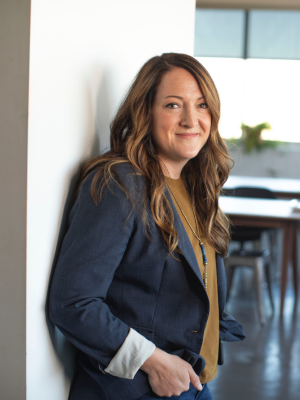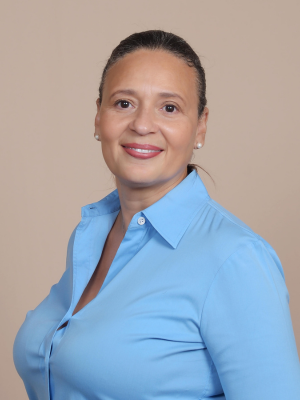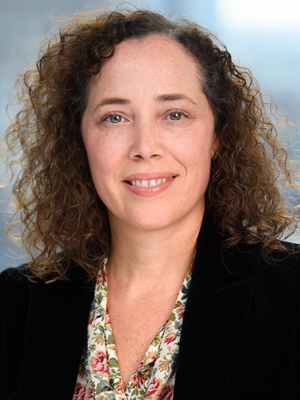 When you’re going through a hard time in your personal life, you’re probably not thinking about how it might impact your career. It’s often hard to see the light at the end of the tunnel when you’re dealing with a personal setback. But, going through such things can uniquely position you to excel in leadership roles – especially as a woman.
When you’re going through a hard time in your personal life, you’re probably not thinking about how it might impact your career. It’s often hard to see the light at the end of the tunnel when you’re dealing with a personal setback. But, going through such things can uniquely position you to excel in leadership roles – especially as a woman.
There’s no question that women in leadership roles often have to deal with unique, specific challenges. Being able to overcome those hurdles can help you foster enhanced leadership skills and empathy.
With that in mind, knowing how to connect personal setbacks to career growth can make a big difference in how you carry yourself in a professional setting, and how you move forward in a leadership position.
The Overlap Between Personal and Professional
Striking a healthy work-life balance is important for everyone. But, it can feel like walking a tightrope when you’re a woman in leadership. Unfortunately, gender bias still exists in many industries, and it can cause many women to feel guilty about spending too much time at home. You might rush to complete milestones at work, or feel a sense of competition. You might even feel guilt for taking the time to practice self-care.
It’s important to let go of that guilt. There’s a greater overlap between the things you learn at home and what you can use at work than you might think. For example, if your family has struggled with financial difficulties in the past, you can use the skills you learned from overcoming those issues to help your business manage its finances, too. Managing personal finance challenges can help with:
- Fostering resilience
- Being financially savvy
- Strategic thinking
- Decision-making abilities
When you have experience with financial setbacks, you’ll feel more comfortable and knowledgeable talking about them. That can help to break the taboo around money in an office setting, and allow for more transparency when it comes to your business’s financial situation. It can also help remind us that when we face challenges on a personal level, we gain spiritual wisdom that we can bring with us into the workplace too.
Mental Health Awareness
Over 40 million adults in the U.S. deal with anxiety. Millions more struggle with depression, and a variety of other mental health conditions. While the stigma surrounding mental health has lessened over the years, it can often still be found in the workplace. Some people are afraid to talk about their mental health issues, so they struggle in silence. Too many business settings don’t do enough to promote mental health and create a safe working environment that allows people to open up about their struggles.
When we normalize conversations concerning topics like anxiety, depression, and burnout in the workplace, we begin to see just how many people are affected — and we may even begin to see how these issues might be stemming from cultural and systemic factors, rather than personal ones. When you realize that some of these struggles are less about personal factors than you originally first perceived, you’ll naturally want to create mentally healthier work environments. All of this helps support professional workplaces that support personal health and wellbeing.
If you’ve dealt with mental health issues in the past – or you’re still dealing with them – you can use those issues to be a better leader and create a healthier workplace environment. It should come as no surprise that your job can actually have an impact on your mental well-being. Fostering a workplace that promotes mental health awareness can help with things like:
- Employee productivity
- Boosted morale
- A sense of trust and safety for employees
When you’re in a leadership role, people will look to you for the “green light” when it comes to certain issues. If you’re willing to open up about your own mental health struggles, it will be easier for others to come forward and do the same. When word gets out that your work environment has completely slashed the taboo nature of mental health issues, it’s likely that you’ll increase employee retention while becoming a more desirable business for new hires.
The Importance of Empathy
Overcoming personal challenges can help to boost your emotional intelligence. Specifically, it can make you more empathetic. You might not think that’s an important skill to have, especially as a woman who wants to be taken seriously in the workforce. But, empathy goes a long way – especially in a leadership position. In fact, it’s one of the top leadership qualities, as vulnerable, empathetic leaders are better able to:
- Be completely and entirely honest with themselves and others, even when it’s difficult.
- Take creative risks and step outside of their comfort zones.
- Embrace imperfection as an important part of learning and growing.
Leaders who have overcome mental health issues, themselves, are naturally more likely to be empathetic. Taking care of a family and dealing with the daily challenges and setbacks that arise from being a leader at home can also carry over into the workplace. Leaders who empathize aren’t showing weakness. Rather, they are able to identify the feelings of the people working for them. Not only does that help with self-awareness, but it makes them more thoughtful, conscientious, and confident in their decisions.
One example of empathy-as-a-strength can be shown in the form of cultural wealth — more specifically resistant capital. Resistant capital is “the inherited foundation and historical legacy of communities of color and marginalized groups in resisting inequality and pursuing equal rights.” This includes resisting stereotypes that you don’t identify with. If you’ve ever had to integrate from another culture, you understand how hard it can be to feel like an outsider — and you can bring that knowledge as a strength to your workforce.
Leaders who are empathetic understand the needs of those who work for them. They’re more likely to build healthy relationships with those people, fostering a more positive, communicative work environment.
Emotional intelligence is more than just a soft skill. Take the same empathy you might show to your family and friends and carry it over into the workplace.
Everyone faces challenges in their personal lives. Using those setbacks to enhance your leadership can be an effective way to “humanize” yourself in the business world while still gaining the respect you deserve. Learn from your setbacks instead of letting them bring you down. They can help you become the leader you were born to be.
By: Indiana Lee is a passionate writer from the Pacific Northwest, specializing in business operations, leadership, and marketing. Connect with her on LinkedIn.






